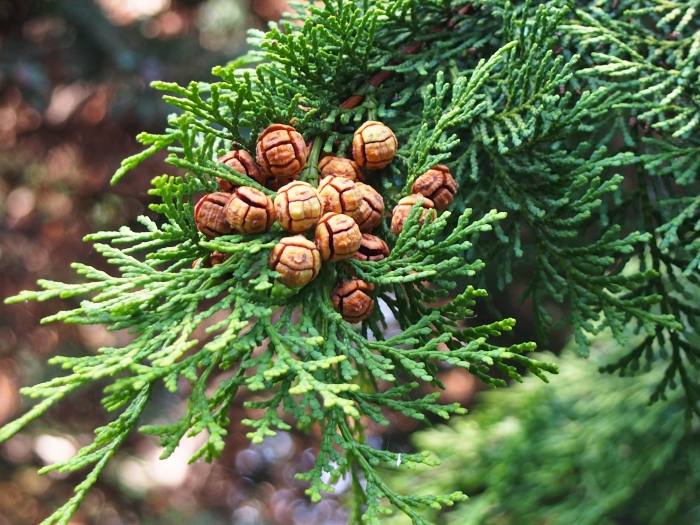Hinoki Cypress
(Chamaecyparis obtusa)
Hinoki Cypress (Chamaecyparis obtusa)
/
/

Agnieszka Kwiecień, Nova
CC BY-SA 4.0









































Estimated Native Range
Summary
This species is valued for its slow growth rate, making it suitable for smaller gardens and urban landscapes. It is also prized for its aromatic wood and resistance to rot, making it a popular choice for construction, particularly in Japan. In cultivation, it is used for specimen planting, as a privacy screen, and in rock gardens. The numerous cultivars offer a range of sizes and foliage colors, enhancing its versatility in garden design. Hinoki Cypress requires well-drained soil, consistent moisture, and can tolerate a range of light conditions from full sun to part shade. It is generally disease-resistant but can suffer from root rot if overwatered or planted in poorly drained soils.CC BY-SA 4.0
Plant Description
- Plant Type: Tree
- Height: 50-75 feet
- Width: 15-25 feet
- Growth Rate: Slow
- Flower Color: N/A
- Flowering Season: Non-Flowering
- Leaf Retention: Evergreen
Growth Requirements
- Sun: Full Sun, Part Shade
- Water: Medium
- Drainage: Medium
Common Uses
Bank Stabilization, Bird Garden, Border Plant, Deer Resistant, Drought Tolerant, Fragrant, Hedges, Potted Plant, Rock Garden, Street Planting, Water Garden
Natural Habitat
Moist, well-drained soils of mountainous regions in Japan and Taiwan
Other Names
Common Names: Hinoki False Cypress, Hinoki-Cypress, Japanese Cypress, Feuerbaum, Hinoki-Scheinzypresse, Feuerscheinzypresse, Hinokibaum, Ciprés Japonés, Faux-Cyprès Obtus, Hinoki Álciprus
Scientific Names: , Chamaecyparis obtusa, Chamaecyparis obtusa var. crippsii, Chamaecyparis obtusa f. crippsii, Chamaecyparis tsatsumi, Chamaecyparis andelyensis, Chamaecyparis obtusa var. formosana, Chamaecyparis obtusa f. aurea, Chamaecyparis obtusa f. lycopodioides, Chamaecyparis obtusa var. filicoides
GBIF Accepted Name: Chamaecyparis obtusa (Siebold & Zucc.) Endl.